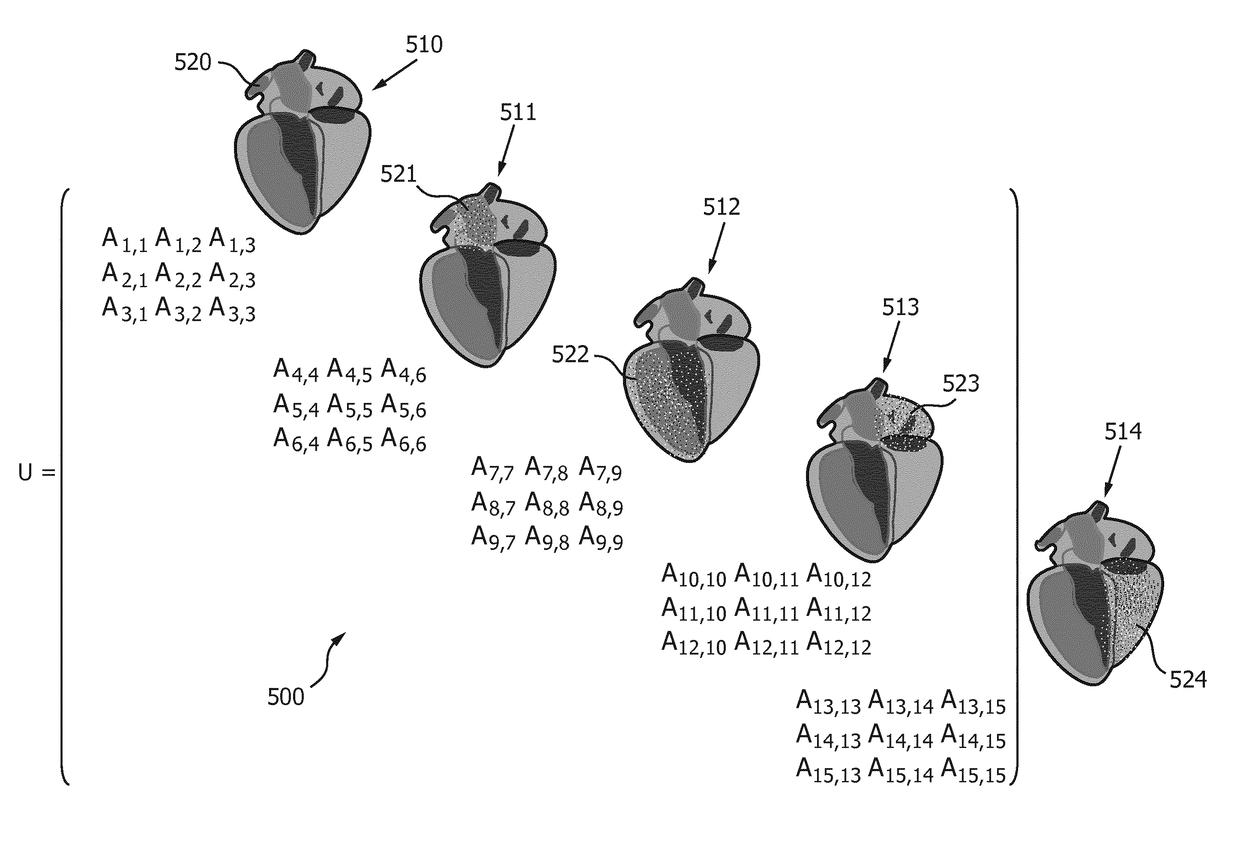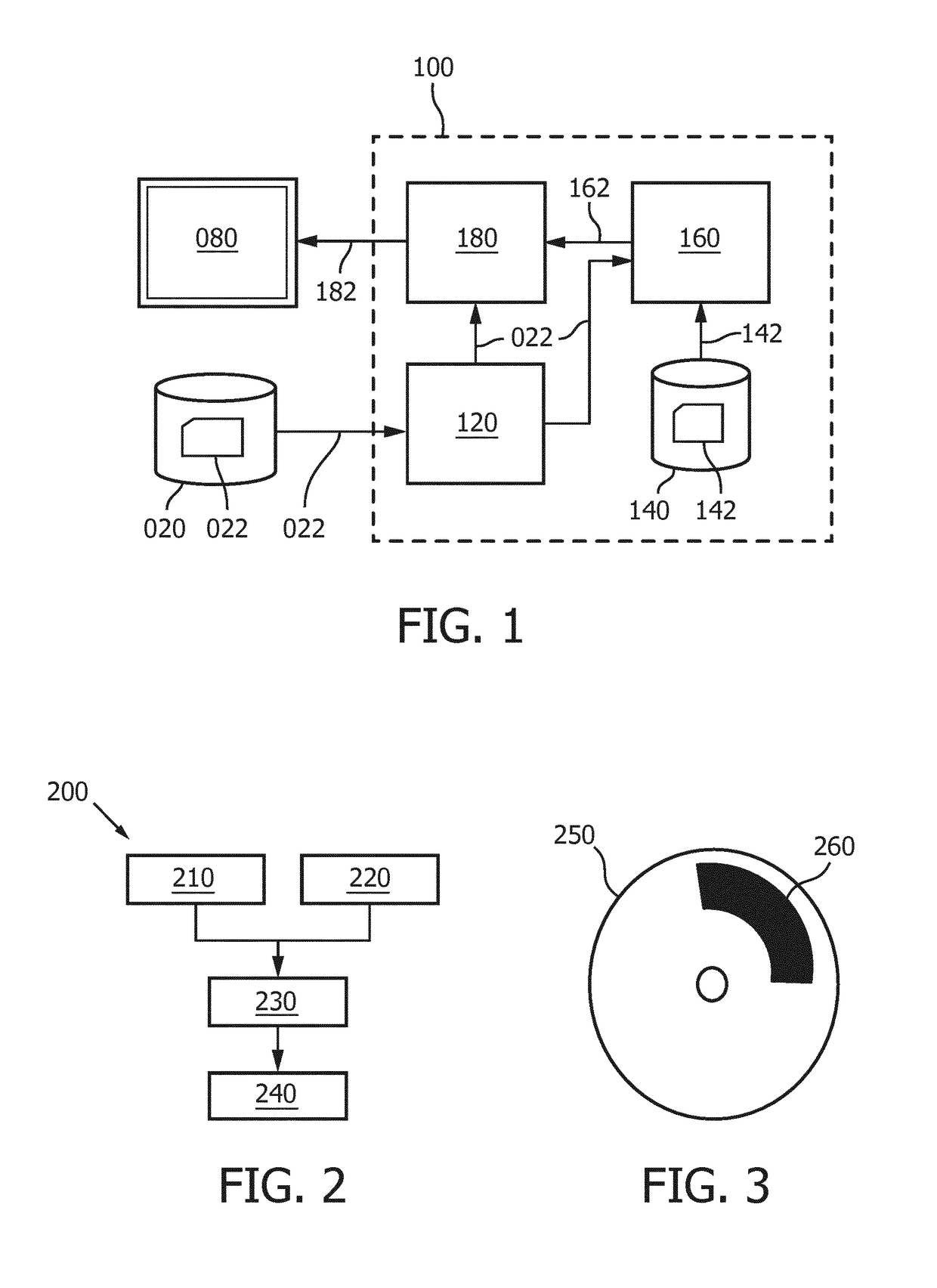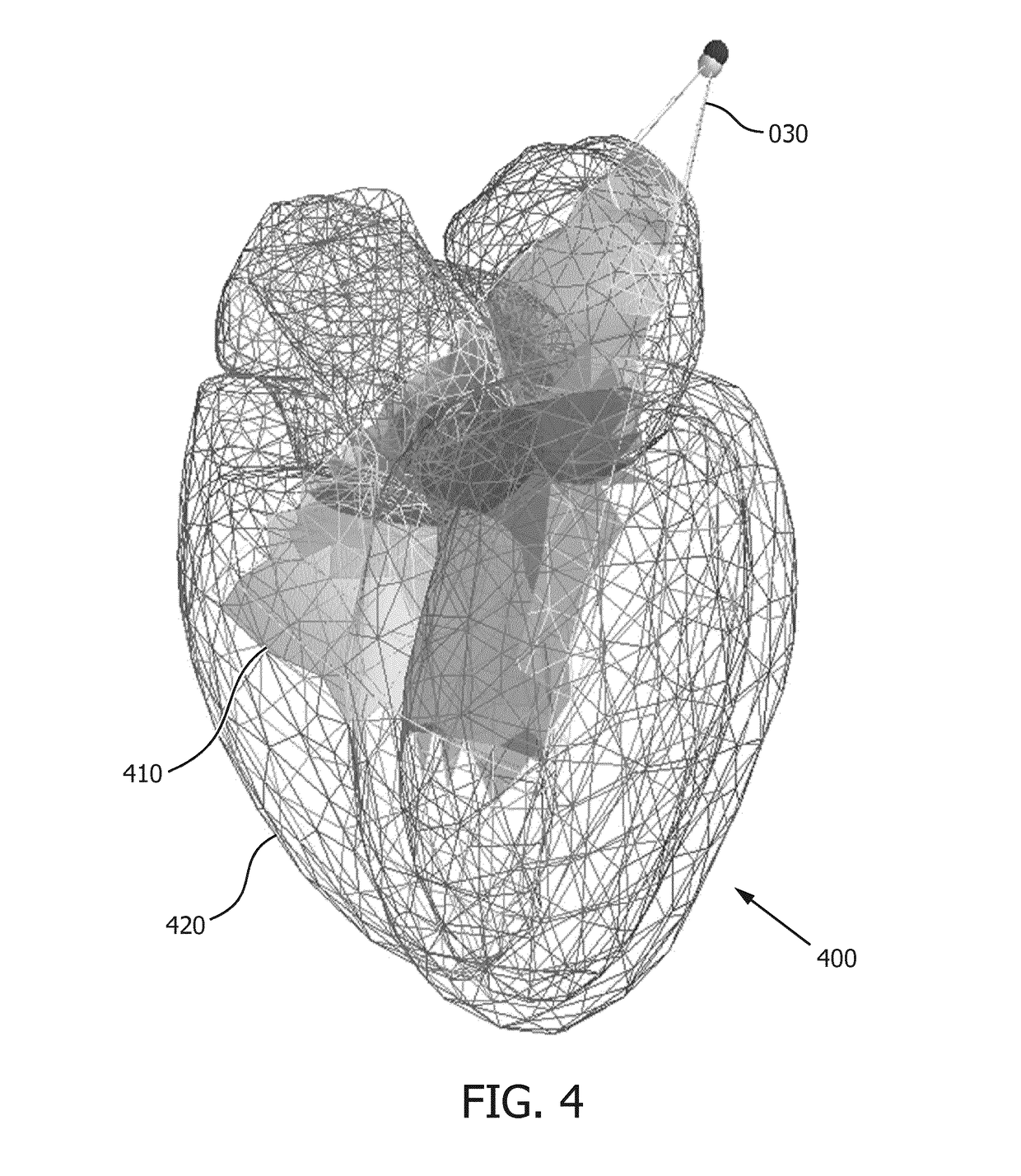Model-based segmentation of an anatomical structure
a model-based segmentation and anatomical technology, applied in the field of model-based segmentation of anatomical structures, can solve the problem that the imaging modality used in acquiring medical images may only provide a limited field of view of the patient's interior, and achieve the effect of facilitating the further processing of the adapted model
- Summary
- Abstract
- Description
- Claims
- Application Information
AI Technical Summary
Benefits of technology
Problems solved by technology
Method used
Image
Examples
Embodiment Construction
[0078]FIG. 1 shows a system 100 for model-based segmentation. The system 100 comprises an image interface 120 for accessing image data 022 representing a medical image of a patient. In the example of FIG. 1, the image interface 120 is shown to be connected to an external image repository 020. For example, the image repository 020 may be constituted or be part of a Picture Archiving and Communication System (PACS) of a Hospital Information System (HIS) to which the system 100 may be connected or comprised in. Accordingly, the system 100 may obtain access to the medical image 022. In general, the image interface 120 may take various forms, such as a network interface to a local or wide area network, such as the Internet, a storage interface to an internal or external data storage, etc.
[0079]It is noted that throughout this text and where appropriate, a reference to the medical image is to be understood as a reference to the medical image's image data.
[0080]The system 100 further compr...
PUM
 Login to View More
Login to View More Abstract
Description
Claims
Application Information
 Login to View More
Login to View More - R&D
- Intellectual Property
- Life Sciences
- Materials
- Tech Scout
- Unparalleled Data Quality
- Higher Quality Content
- 60% Fewer Hallucinations
Browse by: Latest US Patents, China's latest patents, Technical Efficacy Thesaurus, Application Domain, Technology Topic, Popular Technical Reports.
© 2025 PatSnap. All rights reserved.Legal|Privacy policy|Modern Slavery Act Transparency Statement|Sitemap|About US| Contact US: help@patsnap.com



